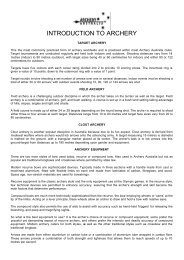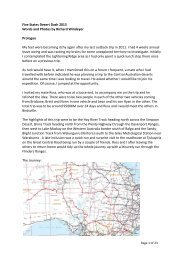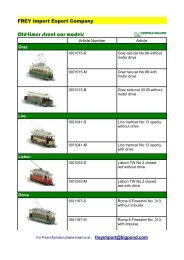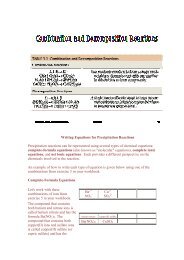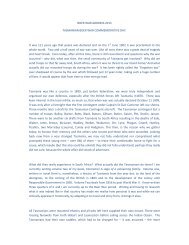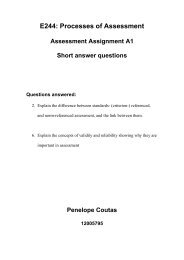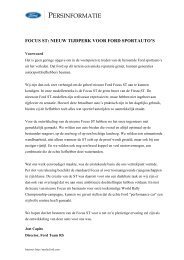TREATING ACIDITY IN COAL PIT LAKES USING SEWAGE AND ...
TREATING ACIDITY IN COAL PIT LAKES USING SEWAGE AND ...
TREATING ACIDITY IN COAL PIT LAKES USING SEWAGE AND ...
You also want an ePaper? Increase the reach of your titles
YUMPU automatically turns print PDFs into web optimized ePapers that Google loves.
Treating acidity in pit lakes using sewage and greenwaste<br />
6.2 Methods<br />
Microcosm experiments were designed to mimic the hypolimnetic water column and<br />
sediment regions of a typical strongly stratified Collinsville pit lake. Twelve clean 100 mm<br />
diameter and 600 mm long (4.5 L) acrylic tubes were set up in an uninsulated laboratory on<br />
the mine site as microcosms containing 140 mm of sediment and 440 mm of GAE pit lake<br />
water. Cores were pushed into the littoral sediment of GAE to a depth of 200 mm and sealed<br />
with rubber bungs at the top and bottom. The height of sediment in the bottom of the core<br />
was then adjusted by sliding it downwards out the bottom of the core to a final depth of<br />
140 mm across all cores. Three replicate cores were then allocated to each of the following;<br />
control (untreated), green waste only (G), sewage (S), or green waste and sewage (GS) at<br />
dosing rates realistic of that able to be achieved in a typical CCP pit lake using regional<br />
sources for several month’s filling.<br />
Green waste was sourced from the Collinsville shire green waste dump nearby the<br />
Collinsville Coal Project lease. Greenwaste consisted of a wide range of garden clippings<br />
from both woody and herbaceous species that had been exposed to Dry season drying<br />
climatic conditions for some weeks. Primary-treated sewage sludge was sourced from the<br />
Collinsville Municipal Wastewater Treatment Plant. Due to the over-capacity of the plant for<br />
the declining town size, the sewage sludge had been exposed to the sun in drying beds for<br />
around 12 weeks.<br />
The cores were then filled with GAE water to within 100 mm of their brim, green waste was<br />
then added where appropriate, and then sewage in the following scheme (Table 6.1).<br />
Microcosm core water levels were topped-up to with 20 mm of the core’s brim and a loose-<br />
fitting rubber bung was applied to the top (not airtight) to reduce air infiltration into the core<br />
water as would a strongly stratified epilimnion (Figure 6.1). The entire suite of microcosm<br />
cores were then placed in a 500 mm high opaque black plastic planter tub which was filled<br />
with water to evenly distribute ambient temperatures between cores and to reduce the<br />
incidence of leakage. The lower water-filled tub was then capped with an identical inverted<br />
planter tub to occlude light, as PAR levels are extremely low in the hypolimnion of these<br />
lakes (author’s unpublished data).<br />
24



